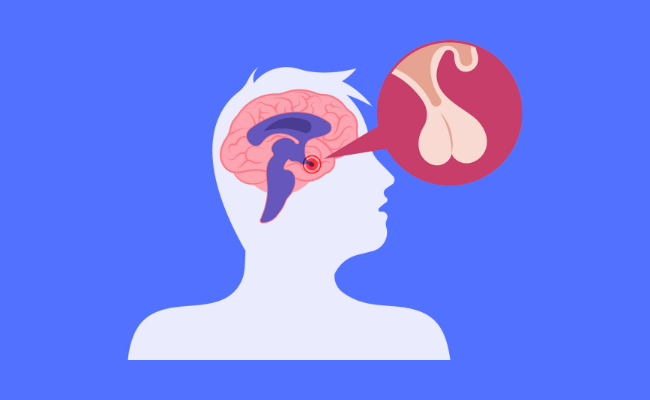How to Treat Acromegaly?
- January 31, 2024
- No Comments

What Is Acromegaly occur?
Acromegaly is a rare hormonal disorder that results from the excessive production of growth hormone (GH) in the pituitary gland. This condition primarily affects adults and occurs when the pituitary gland, located at the base of the brain, produces an abnormally high amount of growth hormone. The excess growth hormone leads to the enlargement of bones and tissues in the body, particularly in the hands, feet, and face.
Why Does Acromegaly occur?
The primary cause of acromegaly is the overproduction of growth hormone, usually due to a noncancerous tumor (adenoma) on the pituitary gland. These tumors are generally benign, meaning they are not cancerous, but they can cause health issues by overstimulating the production of growth hormone. In some cases, the adenoma may affect surrounding tissues or put pressure on the optic nerves, causing visual disturbances.
How Does Acromegaly manifest?
The symptoms of acromegaly develop gradually and may not be immediately noticeable. Common signs include enlargement of the hands and feet, changes in facial features such as the jaw and nose, joint pain, and thickening of the skin. Patients may also experience other complications such as sleep apnea, high blood pressure, and diabetes. Since the onset is slow, individuals with acromegaly may not realize they have the condition for years.
Treatment Solutions for Acromegaly
- Surgery: The most common and effective treatment for acromegaly is surgical removal of the pituitary tumor. This procedure, known as transsphenoidal surgery, involves accessing the pituitary gland through the nasal passage and removing the tumor. Surgeons use specialized instruments to navigate through the skull base, minimizing the risk of damage to surrounding structures. Successful surgery can lead to a rapid reduction in growth hormone levels and alleviate symptoms.
- Medication: Medications may be prescribed to lower the production of growth hormone or block its effects on the body. Somatostatin analogs, such as octreotide and lanreotide, are commonly used to suppress GH secretion. Dopamine agonists, like cabergoline, can also be effective in some cases. These drugs are administered through injections and help control the symptoms of acromegaly, although they may not eliminate the need for other treatments.
- Radiation Therapy: In cases where surgery is not a viable option or does not fully resolve the issue, radiation therapy may be recommended. This treatment involves directing focused radiation beams at the pituitary gland to shrink or destroy the tumor. While effective, radiation therapy is a slower process, and its full impact may take several years to manifest. It is often considered when surgery and medication are not sufficient.
Benefits Of Treating Acromegaly
- Improved Physical Appearance: One of the most visible benefits of treating acromegaly is the positive impact on physical appearance. As the overproduction of growth hormone leads to the enlargement of facial features, hands, and feet, successful treatment results in the reversal of these changes. Patients often experience a more proportional and aesthetically pleasing appearance, boosting self-esteem and confidence.
- Enhanced Joint Function and Reduced Pain: Acromegaly can cause joint pain and stiffness due to the abnormal growth of bones and tissues. Treatment helps alleviate these symptoms, improving joint function and mobility. The reduction in pain allows individuals to engage in daily activities more comfortably, fostering an active and fulfilling lifestyle.
- Resolution of Organ Enlargement: The excess growth hormone in acromegaly can lead to the enlargement of internal organs, including the heart. Treating the condition prevents further organ enlargement and reduces the strain on vital organs. This contributes to cardiovascular health and lowers the risk of complications such as heart failure.
- Normalization of Metabolic Function: Acromegaly is associated with metabolic disturbances, including insulin resistance and diabetes. By addressing the hormonal imbalance, treatment helps normalize metabolic function. Controlling these metabolic factors is crucial in preventing the development or progression of diabetes, improving overall metabolic health.
- Prevention of Respiratory Complications: Enlargement of soft tissues, such as the tongue and throat, can contribute to respiratory issues, including sleep apnea. Treating acromegaly reduces the size of these tissues, alleviating breathing difficulties and improving sleep quality. This, in turn, reduces the risk of complications associated with untreated sleep apnea.
- Psychological Well-being: The psychological impact of acromegaly should not be underestimated. Individuals with the condition may experience emotional distress due to changes in physical appearance and the potential development of comorbidities. Successful treatment not only addresses these concerns but also contributes to improved mental health, reducing anxiety and depression associated with the condition.
- Prevention of Cardiovascular Complications: Acromegaly can lead to hypertension and other cardiovascular issues, increasing the risk of heart disease. Effective treatment helps control blood pressure and reduces the strain on the cardiovascular system, minimizing the risk of heart-related complications and improving overall cardiovascular health.
- Restoration of Hormonal Balance: Treating acromegaly aims to restore hormonal balance in the body by normalizing growth hormone levels. This not only addresses the symptoms of acromegaly but also prevents the potential development of other hormonal imbalances, ensuring overall endocrine health.
- Enhanced Long-Term Tumor Control: For cases where the underlying cause is a pituitary adenoma, successful treatment contributes to long-term tumor control. Regular monitoring and appropriate medical interventions help prevent further tumor growth, reducing the risk of complications associated with untreated tumors.
Comments (0)